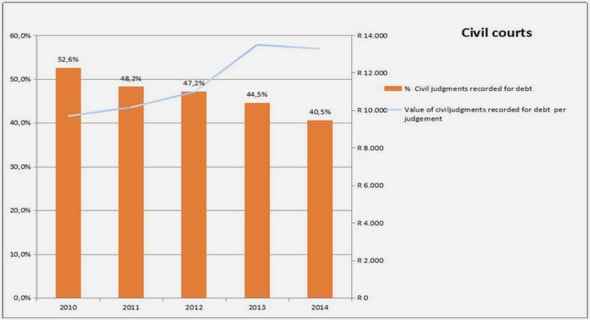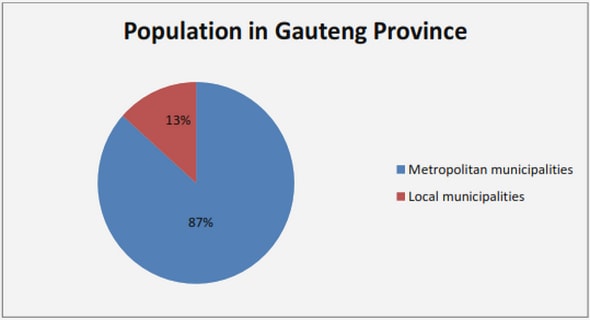Get Complete Project Material File(s) Now! »
The Concept of Auditing
According to the International Standards on Auditing 200 (IFAC, 2010b) the objective of an audit is to enable the auditor to express an opinion on whether the financial statements are prepared, in all material respect, according to an identified financial reporting framework. This generally implies the auditor expressing an opinion on whether the financial state-ments are “presented fairly” or give a “true and fair view”.
The purpose of an audit and the reason why an auditor gives an opinion is to “enhance the degree of confidence of intended users in financial statements” (IFAC, 2010b p. 3). As the financial information tend to be used for decision-making by different stakeholders it be-comes crucial for the information to coincide with the reality (FAR, 2006). Thus, an audit implies securing the quality of the information given out by a company so that stakeholders can rely on the information and make well-informed decisions (Diamant, 2004). Providing an independent external opinion on the financial health of a company gives stakeholders the confidence to rely on the financial information. An audit is done for the benefit of the public; it is of great importance to shareholders, suppliers, customers, employees and other stakeholders. Without the external auditor these stakeholders would have to secure the quality of the information themselves (FAR, 2006).
The Auditor’s Role
Stakeholders with an interest in a company’s financial position must be able to rely on the information given out by a company. The CEO and the board of directors are responsible for this information while the auditor’s role is to secure the quality of the information (FAR, 2006). An auditor gathers evidence on the audit client to express an opinion to the intended users, thereby increasing stakeholders’ trust in the financial information provided (Hayes et al., 2005).
The European Commission directive (2006, p. 6) on statutory audit 2006/43/EC describes appointment of an auditor; it states “the statutory auditor or audit firm shall be appointed by the general meeting of shareholders or members of the audited entity”.
In advance to the general meeting of shareholders a proposal on a statutory auditor or au-dit firm shall be presented by the audit committee. An audit committee should exist in pub-lic-interest entities, that is entities which have a “… higher visibility and are more economi-cally important…” (European Commission directive, 2006, p. 6). In essence public-interest entities are all listed companies plus financial services sector companies (Bury, 2011).
In addition to the regular audit activities an auditor can also act as an advisor. There are two types of advisory services, audit services and non-audit services. An auditor is obliged to inform his audit client of faults that has been discovered during the audit process, advi-sory services that fit into this category are seen as audit services. Non-audit services are those services which have no connection to the audit process (Carrington, 2010). At the moment there is no clear distinction of what services are categorized as audit and non-audit services, however the new proposal brought forth by the Commission includes a more clear separation of the two. Those services which normally entail a conflict of interest will be categorized as non-audit services and also prohibited from being offered to an audit cli-ent. Examples of such services are; tax, bookkeeping, actuarial and legal services (Bury, 2011).
Independence
According to the European Commission directive (2006) on statutory audit 2006/43/EC section 11, “statutory auditors and audit firms should be independent when carrying out statutory audits.” As stated earlier it is crucial for the auditor to remain independent throughout the audit process in order for shareholders and other stakeholders to fully trust the financial information provided by a company. IFAC’s Handbook of the Code of Ethics for Professional Accountants (2010a) defines and divides independence into independence of mind and appearance.
Independence of mind refers to the real independence of the auditor; it is the state of mind an auditor is in. An auditor has independence of mind when he/she can exercise profes-sional judgment without being affected by external influences. Independence in appearance is the perceived independence, that is, how a third party perceives the independence of an Rani Afrem auditor. An auditor can have independence of mind and make independent decisions even though there is a perceived lack of independence. However the two are equally important, if there is a lack of independence in appearance stakeholders will not trust the financial in-formation given out by a company, thereby making it just as useless as if the auditor had a lack of independence in mind.
IFAC’s Handbook of the Code of Ethics for Professional Accountants (2010a) section 290 provides a conceptual framework approach to independence which assists auditors’ to achieve and maintain independence. The approach requires auditors’ to apply safeguards to eliminate threats or to reduce them to an acceptable level, when safeguards are not sufficient enough to do so, the auditor should resign or decline from the audit engagement.
Possible Threats against Auditor Independence
In May, 2002 the Commission’s recommendation regarding statutory auditors’ independ-ence in the EU was released. The recommendation presents the fundamental principles re-garding the auditor’s objectivity, independence and potential threats against independence. Among other things it is mentioned that an auditor must be independent from his audit cli-ent both in mind and appearance. The recommendation also presents threats against audi-tor independence; those mentioned are self-interest, self-review, advocacy, familiarity or trust, and intimidation (European Commission, 2002).
1996 Green Paper
In 1996 the Commission presented the Green Paper: The role, the position and the liability of the statutory auditor within the EU. The 1996 Green Paper discusses the role and inde-pendence of an auditor as a result of several financial scandals. The quality of an audit was questioned as the role, position and liability of an auditor did not correspond across the EU (European Commission, 1996a).
Even though the main focus of the 1996 Green Paper was to harmonize the auditor’s role across member states certain questions such as prohibition of non-audit services and man-datory rotation of audit firms were brought up. In 1996 the competition among audit firms had increased, as a result audit engagement fees were lowered. To compensate for the low-er audit fees many audit firms began to offer non-audit services. This created a discussion on whether non-audit services compromised auditor independence and if non-audit ser-vices should be banned (European Commission, 1996a). The 1996 Green Paper resulted in a new approach to auditing aimed to harmonize the audit profession throughout the EU. Proposals on prohibition of non-audit services and mandatory rotation of audit firms were however not discussed further (European Commission, 1996b).
2010 Green Paper
In October 2010 the Commission presented the Green Paper on audit policy: lessons from the crisis. The Green Paper opens a discussion for, among other things, the role of an audi-tor, the independence of an auditor and the market structure (European Commission, 2010). In between the 1996 and the 2010 Green Paper the financial scandals in the early 21th century had a significant impact on the audit profession. Financial scandals such as Enron, WorldCom and Parmalat made the public question the audit profession. These ma-jor corporate collapses eventually resulted in the Sarbanes-Oxley Act in the U.S and later on the 2006 Statutory Audit Directive in the EU (Unerman & O’Dwyer, 2004).
In 2008 a worldwide financial crisis erupted and the role of banks was critically questioned. The fact that banks revealed huge losses during the financial crisis made the public ques-tion how the external auditors could issue a clean opinion despite the serious weaknesses. The role of auditors however had not been discussed to the same extent as the role of banks, that is, until the Commission presented the 2010 Green Paper. In the Green Paper the Commission questions the existing independence of auditors and seeks to enhance au-ditor independence. Among other things the Green Paper argues that the independence is Jönköping International Business School Rani Afrem threatened by auditing firms providing non-audit services and that an audit client generally tends to keep the same audit firm for many years (European Commission, 2010).
In all, the consultation paper consists of 38 questions regarding proposals on reform of the audit profession. Even though the response time was short (eight weeks) 689 replies were received from a wide group of stakeholders including investors, academics, practitioners and public authorities. The 689 replies is the highest response rate received by the Com-mission since 2008 (European Commission, 2011a).
Directive on Statutory Audit
The European Commission directive (2006) on statutory audit 2006/43/EC establishes rules regarding the statutory audit of annual and consolidated accounts. The purpose of the directive is to strengthen the trust on auditors and to harmonize the rules between member states. Therefore the directive must be implemented by all member states. According to the directive member states must confirm that audit firms and auditors are subject to principals of professional ethics. These should include principals regarding integrity, objectivity and due care. Corresponding set of rules can also be found in IFAC’s Handbook of the Code of Ethics for Professional Accountants and International Standards on Auditing (ISA).
Recent Proposal on Reform of the Audit Market
In late November 2011, the Commission presented its proposal regarding the statutory au-dit of public-interest entities. The new proposal will focus on strengthening the independ-ence of auditors and create more diversity to the high-concentrated audit market. The proposal will clarify the role of the auditors and introduce more strict rules to enhance the quality of an audit and restore confidence in the audit profession. Mandatory rotation of audit firms and prohibition of non-audit services are some of the key measures in this pro-posal (European Commission, 2011b).
The proposal is indeed a big and ambitious package which will have a significant impact on the audit of public-interest entities. Public-interest entities are in essence all listed companies and financial services sector companies. The proposal has not yet been passed into law. The proposal is currently being processed by different institutions and the expected decision time is said to be around 3-5 years. During this process the proposal may be altered, dropped or passed in its current form (Bury, 2011).
If passed into law in its current form the audit market would undergo a major reform. The strictness of the proposal can be compared to the Sarbanes-Oxley Act which was intro-duced in the U.S after the Enron scandal. The SOX Act introduced, among other things, rotation of audit partners and prohibition of nine non-audit services (Sarbanes-Oxley Act, 2002, sec. 201, 203). The proposal brought forth by the Commission goes further than that, introducing mandatory rotation of audit firms instead of just audit partners and pro-hibiting more than just nine non-audit services.
Mandatory Rotation of Audit Firms
Mandatory rotation of audit firms implies an audit firm to rotate after a maximum audit engagement period of six years; it is possible to have the period extended by two years if authorized by the supervisor (Bury, 2011). Each member state should appoint a competent authority (the supervisor); this authority should be independent of auditors and responsible for the supervision of auditors (European Commission, 2011c). In the situation of joint-audits, which are encouraged but not obligatory, the maximum engagement period is nine years with a possible extension of three years if authorized by supervisor. The audit firm is no allowed to be involved with the same client until four years have elapsed (Bury, 2011).
Prohibition of Non-Audit Services
This proposal will prohibit audit firms from providing non-audit services to their audit clients. Non-audit services are those services which normally entail a conflict of interest, that is services which implies self-review, a close relationship to management or if there is a commercial interest for the auditor in having that work. Examples of such services are tax services, developing risk management systems, actuarial services, legal services and partici-pation in the internal audit. There are also services which potentially could entail a conflict of interest. Examples of such services are human resource services and providing confident letters to investors. These services can be provided if authorized by the audit committee or the supervisor (Bury, 2011).
In addition to this proposal large audit firms will have to separate their audit consultancy services to a separate legal entity. In other words large audit firms will become pure audit firms, providing no other services than audit services. There is a numerical threshold on what defines a large audit firm, in most member states it implies the Big 4 accounting firms while in a few there may be some second tier audit firms which will fall into the category of large audit firms (Bury, 2011).
Shareholders the Primary Stakeholder
The agency theory highlights the importance of shareholders while the stakeholder theory takes a wider group of constituents into account. Today, many companies apply the stake-holder theory, satisfying a wider group of stakeholders such as employees, providers of credit and suppliers. Nonetheless shareholders remain to be the primary stakeholder as they have invested resources in the company and take the profit remaining, while for example providers of credit have already been paid. Shareholders invest resources with the demand that the resources will be used to maximize the value of the firm; this in turn should be the benefit of the society as a whole. Another reason why shareholders are seen as the primary stakeholder is that shareholder rights are usually protected in law while other stakeholders in most countries are not protected by law. Many companies acknowledge the importance of taking a wider group of stakeholders into account; therefore many companies strive to maximize shareholder value while at the same time taking other stakeholders into account (Mallin, 2010).
This thesis will study the replies made by shareholders (also referred to as investors) to the Green Paper. Shareholders are the primary stakeholder and the most common user of fi-nancial reports. Therefore shareholders are those who are most concerned of the validity of financial reports and thereby the independence of auditors. This makes it very interesting and important to investigate their views to the Green Paper.
Table of contents :
1 Introduction
1.1 Background
1.2 Problem Discussion
1.3 Research Questions
1.4 Purpose
2 Review of Literature
2.1 History of the Audit Profession
2.2 The Concept of Auditing
2.3 The Auditor’s Role
2.4 Independence
2.5 Possible Threats against Auditor Independence
2.5.1 The Swedish “Analysmodellen”
2.5.2 Non-Audit Services
2.5.3 Mandatory Rotation
2.6 Green Paper
2.6.1 1996 Green Paper
2.6.2 2010 Green Paper
2.7 Rules and Regulations
2.7.1 Directive on Statutory Audit
2.8 Recent Proposal on Reform of the Audit Market
2.8.1 Mandatory Rotation of Audit Firms:
2.8.2 Prohibition of Non-Audit Services:
2.9 Importance of Shareholders
2.9.1 Agency Theory
2.9.2 Legitimacy Theory
2.9.3 Shareholders the Primary Stakeholder
3 Method
3.1 Choice of Subject
3.2 Research Design
3.2.1 Research Approach
3.2.2 Descripto-Explanatory Research
3.3 Data Collection
3.3.1 Qualitative Study
3.3.2 Secondary Data
3.3.3 Selection of Questions
3.3.4 Selection of Replies
3.4 Quality Assessment
3.4.1 Reliability
3.4.2 Validity
3.4.3 Generalization
4 Empirical Findings
4.1 Alliance Trust Plc.
4.2 Association of British Insurers
4.3 Association of Pension Funds Management Companies
4.4 AVIVA
4.5 BlackRock Inc.
4.6 CFA Institute
4.7 Dutch Shareholders Association (VEB)
4.8 Eumedion
4.9 Hermes Equity Ownership Services
4.10 International Corporate Governance Network
4.11 Investment Management Association
4.12 Irish Funds Industry Association
4.13 Local Authority Pension Fund Forum
4.14 Proxinvest & ECGS
4.15 Railpen Investments
4.16 Standard Life Investments
4.17 Swedish Shareholders’ Association
4.18 The British Venture Capital Association
4.19 The California Public Employees’ Retirement Systems
4.20 Commission’s Proposal on Reform of the Audit Market
4.20.1 Appointment and Remuneration
4.20.2 Mandatory Rotation of Audit Firms
4.20.3 Prohibition of Non-Audit Services
5 Analysis
5.1 Analysis of Question 16 and 17
5.2 Analysis of Question 18
5.3 Analysis of Question 19
5.4 Final Discussion
6 Conclusion
6.1 Further Research
Bibliography


